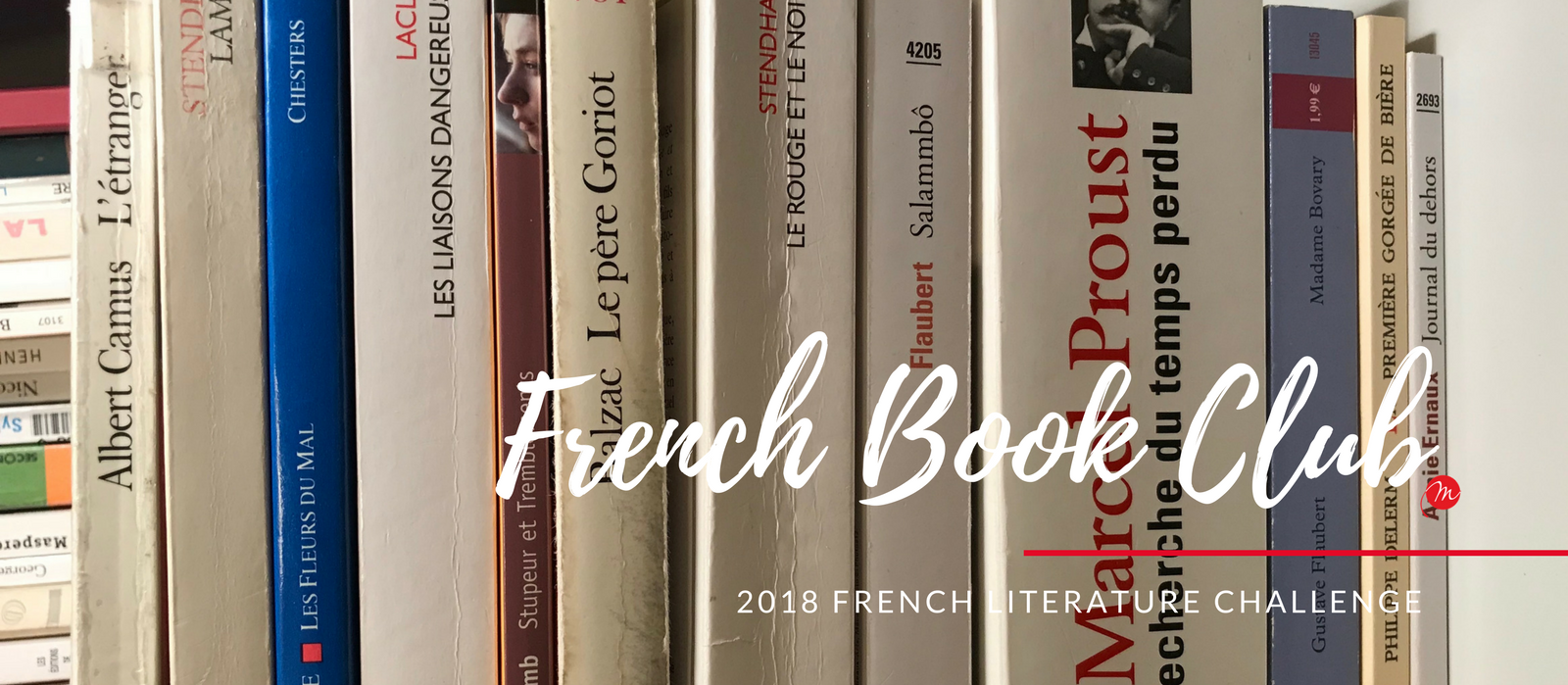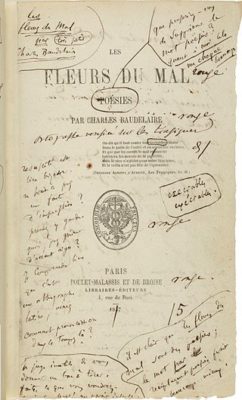MyFrenchLife™ French Book Club: Charles Baudelaire, Les fleurs du Mal – November 2018
 Calling all Francophiles, lovers of literature, and savvy challenge seekers. Have you ever dreamt of joining a French book club? Well, now’s your chance… Welcome to the MyFrenchLife™ 12-month French Literature Challenge 2018!
Calling all Francophiles, lovers of literature, and savvy challenge seekers. Have you ever dreamt of joining a French book club? Well, now’s your chance… Welcome to the MyFrenchLife™ 12-month French Literature Challenge 2018!
Every month this year, we challenge you to sit back, relax, and delve into one of our specially chosen French books! In November, we’re reading Baudelaire.
Why take part in the MyFrenchLife™ book club?
Each month, we’ll be consulting our French literature experts to bring you a new and exciting French book review. We promise to dig deep and share our most intimate opinions, interpretations, and perceptions of France’s best literary offerings – and we’d love you to do the same!
Perhaps you can’t resist a challenge.
Maybe you’re still looking for that perfect New Year’s resolution.
 Whatever your reason, we challenge you to join us in our 2018 literary crusade – every opinion matters, especially yours.
Whatever your reason, we challenge you to join us in our 2018 literary crusade – every opinion matters, especially yours.
This November, we’re continuing the challenge with a classic poetry collection – Baudelaire’s ‘Les fleurs du Mal’.
So, let’s all pick up our books and let the reading commence! Join our online book club, join the reading, join the fun – and have your voice heard.
Baudelaire’s ‘Les fleurs du Mal’
Buy here: en français or in English or English & French
At MyFrenchLife™, we have looked at Baudelaire’s guide to Paris and celebrated his 150th anniversary. Now, we are looking at his most famous work, Les Fleurs du Mal, in this month’s French Book Club!
Starting with Le spleen: understanding Les fleurs du Mal
To understand Les Fleurs du Mal, it is essential to first outline Le Spleen and L’Idéal. The former is the poet’s disillusionment of reality not meeting his desires and expectations; his ennui and despair. The spleen is beyond sadness, it is a turmoil and an existential melancholy, caused by the world the poet lives in. In this way, many of the poems can feel dark and gothic.
L’Idéal is the ideal beauty; a transcendence of everyday life. In this light, one may choose to view the collection as Baudelaire’s escape from the spleen and achieving the ideal, or, finding the ideal amongst the spleen.
Les Fleurs du Mal, The Flowers of Evil, may therefore be the beauty in the ugly face of reality. Or, perhaps that evil can itself be seen as beauty.
Baudelaire presents that Paris has given him such ‘mud’ to work with, and he has turned it into poetic gold, or even flowers, extracting the quintessence of life and making it valuable.
Les Fleurs du Mal: breaking it down
 Les Fleurs du Mal is split into six sections. Although one would not be giving such a complex work justice by labelling it into distinct categories, for the purpose of this review, each section potentially suggests a meas of escape from the spleen.
Les Fleurs du Mal is split into six sections. Although one would not be giving such a complex work justice by labelling it into distinct categories, for the purpose of this review, each section potentially suggests a meas of escape from the spleen.
- ‘Spleen et idéal’, is Baudelaire’s search for the ideal in art. It depicts strong emotions of love, alienation, the anxieties of being a poet, as well as the power of the artist whose work can transcend time and memory (see Le Flacon as a good example!).
- ‘Tableaux parisiens’ describes the poet as being part of the crowd, as well as separate from it, in the immersion of the city. It depicts the poet as a social observer, drawing attention to social alienation with a critical stance towards it.
- ‘Le Vin’ portrays an intoxication through alcohol. It also depicts society’s outcasts, linking it to the previous section.
- ‘Les Fleurs du Mal’ conveys perversity in a hopeless attempt to escape from ennui. It portrays lust as being sadistic and masochistic.
- ‘La Révolte’ is, of course, the rebellion. It can be seen as denying Christ coming to Earth and claiming humanity to have been duped, with an emphasis on Satan.
- ‘La Mort’ begins optimistic of death. Then, it changes to the sudden terror that the thought of death brings. The ending fuses both these themes together, with disillusionment as well as hope imbedded into different poems.
Baudelaire: immersion and imagination
 We can see two strands to Baudelaire’s work. The first, an immersion: how the poet chooses to deal with the spleen head on and recuperating through poetry and retreat.
We can see two strands to Baudelaire’s work. The first, an immersion: how the poet chooses to deal with the spleen head on and recuperating through poetry and retreat.
The second: when the poet does not find this satisfactory enough for recuperation, he takes refuge in his dreams and his imagination, seeking alternatives to his reality.
Baudelaire’s work is a pleasure in the way that you will find new themes, images and ideas each time you read. It is an anthology about which I found myself saying “I will only read 3 poems today,” then becoming quickly absorbed into Baudelaire’s incredible mind.
Not only are the poems carefully picked to link together, but they have exceptional imagery that will transport you from your chair into the depths of Paris and the poet’s dark imagination. In this way, ‘Tableaux Parisiens’ will always be my favourite section.
Now it’s your turn – get involved here.
Let the challenge begin!
Here you will find full details of our 2018 French literature challenge and READING LIST
In true book club fashion, we’re eager to get together – if only virtually – and compare literary notes. Don’t forget to leave your reviews in the comments box and let us know what you thought.
Do you have a favourite Baudelaire section, poem, verse or line? We would love to hear you thoughts and reflections in the comments below!
Image credits- © Jessica Rushton
- © Jessica Rushton
- Front-piece de la première édition, via Wikipedia
- Couverture d’une édition desŒuvres complètes de Charles Baudelaire, via Wikipedia
- Portrait of Charles Baudelaire, by Felix Nadar via Wikipedia







